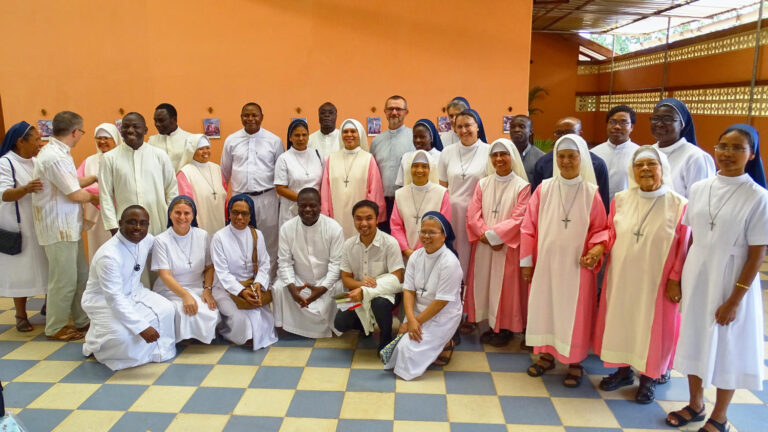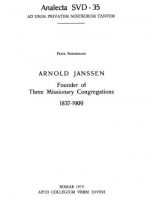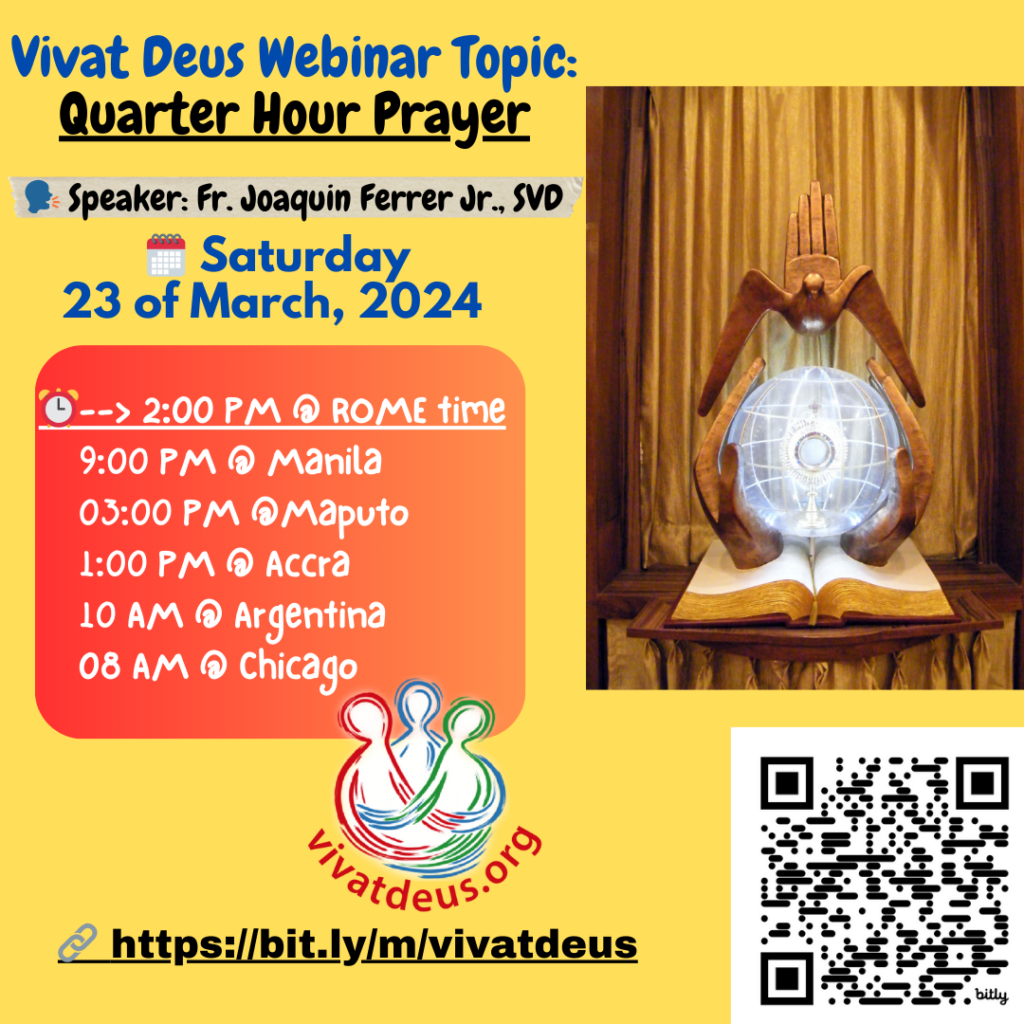It is heartening to note that ongoing reflection on “Prophetic Dialogue” continues to take place among confreres gathered in chapters, assemblies, workshops and meetings. This continuing reflection has led to the emergence of a few new insights on mission, at least as we understand and practice it today in the SVD. One of these insights is “Missio Inter Gentes”, about which I wish to offer a reflection on the occasion of this year’s World Mission Sunday.
1. From “Ad Gentes” to “Inter Gentes”.
Since the time of the early church, a clear distinction and demarcation existed between the “gentes” (ethne) and the “populus Dei” (laos tou theou). That is, a distinction between the chosen people of God and the nations, or the Jews and the gentiles, the circumcised and the uncircumcised, the believers and the pagans. Along with this distinction was the other distinction between the center of faith and the periphery of unbelief, or the distinction between “inside” and “outside”. In the early church, the center of faith was Jerusalem and the surrounding nations the periphery of unbelief. In the history of the church, Christian Europe was the center of faith and the rest of the world was the periphery of unbelief. In the context of this dual distinction, “missio ad gentes” was necessarily “missio ad extra”. Mission was “going out” to the pagan nations. Mission was a one-way movement from Christian Europe to the pagan world. Thus, the expressions “mission sending” countries (or the “missionary church”) and “mission receiving” countries (or the “mission churches”).
Two recent developments have changed this situation radically – one in the church and the other in the world.
1.1. Missionaries from the South.
The first development is the emergence of missionaries originating from the South of the world. Europe is no longer the sole or even the primary source of missionaries. This has to do with the drastic drop of religious and priestly vocations in Europe and the rest of the so-called “Global North”. So, we are now witnessing the phenomenon of missionaries originating from the “Global South” (Asia, Africa, and Latin America). This, in turn, has to do with the growth and maturity of what formerly were called “mission churches” or the churches of the so-called “mission receiving” countries. This is not only a question of what sometimes is called “reverse mission” – that is, missionaries from the former mission territories going as missionaries to Europe. For missionaries from the south also go to Asia, Africa and Latin America. Thus, we speak today not only of a “south-to-north” but also of a “south-to-south” mission, in contrast to the earlier situation where mission was largely a “north-to-south” phenomenon.
1.2. Multi-culturality.
The other development is the growing multi-culturality of many of the cities and countries in the world. Due to the phenomenon of “people on the move” (whether because of international migration or the refugee situation), societies are becoming more and more multi-cultural. At the turn of the millennium, it was estimated that there were 150 million international migrants worldwide (this is, one out of 50 persons). While migration is an age-old phenomenon, the global nature of migration in our age is what gives it a particular prominence. More people today choose or are forced to migrate than ever before, and they travel to an increasing number of countries. International migrants come from all over the world and travel to all parts of the world. As a result, people from different cultures not only are in much closer contact today, oftentimes they are forced to live alongside each other. Many of the world’s cities today are inhabited by widely diverse cultural groups. This massive movement of people is radically changing the face of our cities.
2. “Missio Inter Gentes”.
Today, then, “missio ad gentes” can no longer be identified exclusively with “missio ad extra”. For the “gentes” are no longer only those who are out there, those who are outside. Often the “gentes” are also here among us and around us. It may be the family that lives next door, the person I sit beside in the bus, the young man who comes to fix my television, the lady in the market I buy vegetables from. Today, more and more, we need to understand “missio ad gentes” as also “missio inter gentes”. And when seen not as a replacement of but as a complement to “missio ad gentes”, “missio inter gentes” can enrich our understanding of mission today. Three nuances of “missio INTER gentes” can be of particular help in enlarging our concept of mission today:
2.1. Mission as Dialogue WITH people.
While “ad gentes” underlines the necessity of proclamation, “inter gentes” stresses the indispensability of dialogue in mission. While the direct proclamation of the Gospel remains a permanent requirement in mission, dialogue has also become a missiological imperative. As a 1984 document of the Pontifical Council for Interreligious Dialogue puts it: “Dialogue is the norm and necessary manner of every form as well as of every aspect of Christian mission”. In other words, dialogue is no longer simply an option that we are at liberty to do or not do. It is now an imperative in mission. Pope John Paul II in Redemptoris Missio put it in the following way: “Each member of the faithful and all Christian communities are called to practice dialogue, although not always to the same degree or in the same way” (RM 57).
2.2. Mission as Encounter BETWEEN peoples.
While “ad gentes” brings out the idea of a specialized group of persons (missionaries, religious, priests) being sent on mission to other peoples, “inter gentes” evokes the notion of mission taking place in the encounter between entire communities or groups of people. One can think, for instance, of the dialogue of life between the members of one Catholic parish and those of a local Muslim community, or the students of a Catholic school and those of a non-christian school. One can also think of the witness given by Catholic migrants in a Muslim country in the Middle East, or the witness of Catholic migrant domestic helpers in the homes in secularized Europe. As Church documents never tire of repeating, mission is not just a prerogative of specialized individuals in the Church but the duty of the entire People of God.
2.3. Mission as Finding a Home AMONG the people.
While “ad gentes” stresses the cross-cultural nature of mission and evokes the picture of the missionary being sent to another people, “inter gentes” underlines the fact that the missionary is sent in order to settle in and find a new home among the people. One’s mission is meant not just as a temporary work place but as a permanent home among a new people. This is part of the whole purpose of inculturation and cultural adaptation. This is part of the logic of the incarnation. Just as the Divine Word pitched his tent among us, so also the missionary is expected to pitch his or her tent among the people he or she is sent to. Like Joseph Freinademetz in China, only when one succeeds in transforming oneself to become one with the people, will the missionary be able to transform the people to become followers of the Gospel of Jesus.
Missio INTER Gentes –
mission as dialogue WITH people, mission as encounter BETWEEN peoples, mission as finding a home AMONG the people. For, ultimately, God’s mission is the Divine Word, through whom God makes his home among us and enters into dialogue with us, making possible a fraternal encounter between peoples towards the genuine communion of all God’s children.
Published in Arnoldus Nota – November 2009







